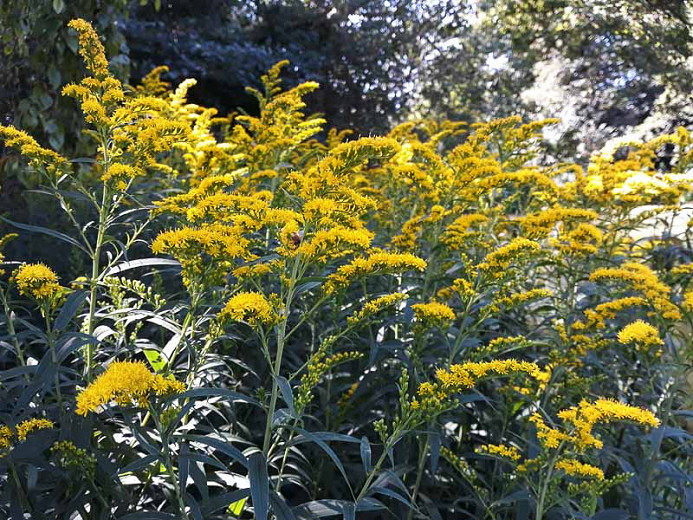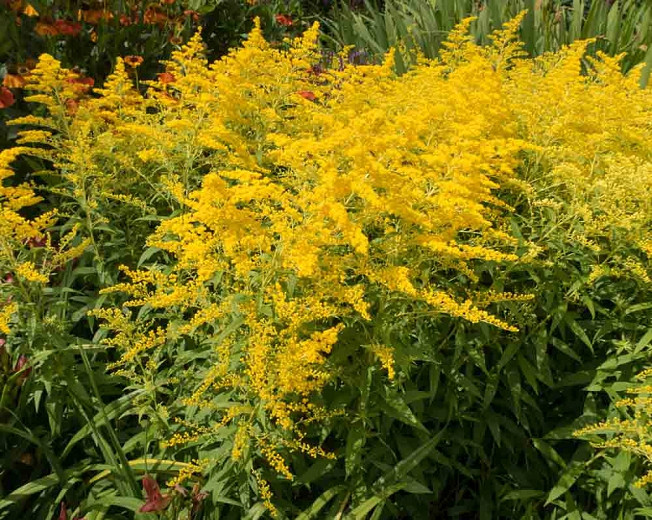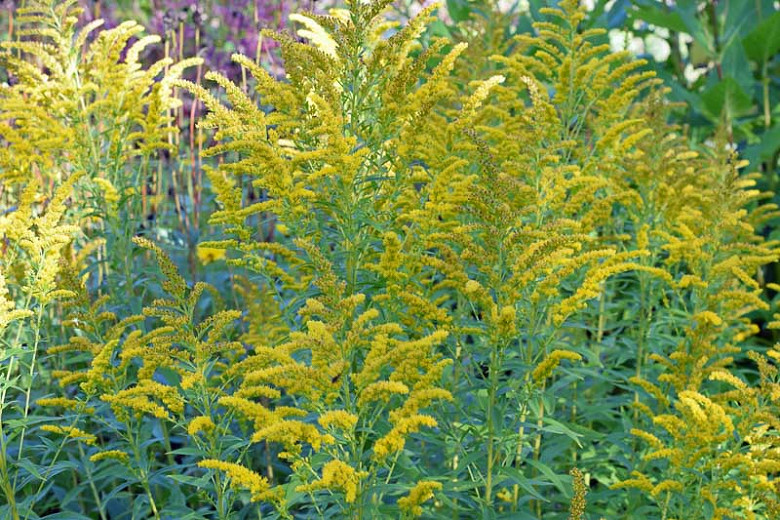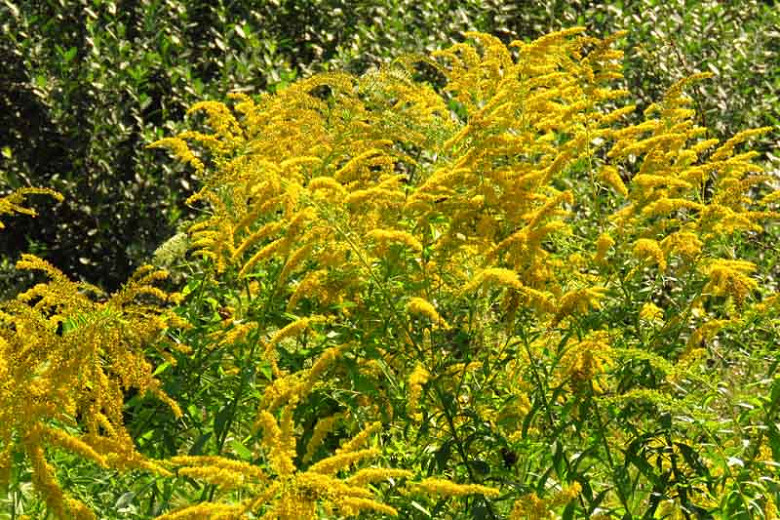Solidago nemoralis (Gray Goldenrod)
One of the smallest goldenrods, Solidago nemoralis (Gray Goldenrod) is a rhizomatous perennial forming a clump of upright, gray-downy stems clad with alternate, narrowly lanceolate, gray-green leaves, 4 in. long (10 cm). From summer to early fall, it bears one-sided, bright yellow flower plumes, 4-10 in. long (10-25 cm), on the upper side of gracefully arching stalks, giving the plant a vase-shaped appearance.
One of the smallest goldenrods, Solidago nemoralis (Gray Goldenrod) is a rhizomatous perennial forming a clump of upright, gray-downy stems clad with alternate, narrowly lanceolate, gray-green leaves, 4 in. long (10 cm). From summer to early fall, it bears one-sided, bright yellow flower plumes, 4-10 in. long (10-25 cm), on the upper side of gracefully arching stalks, giving the plant a vase-shaped appearance. Attractive to birds, bees, and butterflies, Gray Goldenrod provides a bold splash of color in the late-season garden. Easy to grow, low care, and trouble-free, this goldenrod species is less aggressive than the tall goldenrods. It is a good choice for a wildflower meadow or cottage garden. Great as a cut flower.
- Grows up to 18-24 in. tall and wide (45-60 cm). Will spread by creeping rhizomes and self-seeding.
- Performs best in full sun or light shade, in average, dry to medium, well-drained soils. It is not fussy about soils and tolerates dry soils and poor soils. Drought tolerant once established.
- A beautiful plant for cottage gardens, rock gardens, wild gardens, or wildflower meadows.
- Attractive to birds and butterflies, it is deer resistant.
- No serious pest or disease issues. Keep an eye out for rust, anthracnose, powdery mildew, and leaf spot.
- Deadhead spent flowers to avoid self-seeding.
- Propagate by seed or division.
- Native to North America.
Requirements
| Hardiness | 3 – 9 |
|---|---|
| Plant Type | Perennials |
| Plant Family | Solidago – Goldenrods |
| Exposure | Full Sun |
| Season of Interest | Summer (Early,Mid,Late)Fall |
| Height | 1' – 2' (30cm – 60cm) |
| Spread | 1' – 2' (30cm – 60cm) |
| Spacing | 18″ – 24″ (45cm – 60cm) |
| Water Needs | Low, Average |
| Maintenance | Low |
| Soil Type | Clay, Loam, Sand |
| Soil pH | Acid, Neutral |
| Soil Drainage | Well-Drained |
| Characteristics | Cut Flowers, Showy |
| Native Plants | United States, Midwest, Illinois, Indiana, Iowa, Kansas, Michigan, Minnesota, Missouri, Nebraska, North Dakota, Ohio, South Dakota, Wisconsin, Northeast, Connecticut, Delaware, Maine, Massachusetts, Maryland, New Hampshire, New Jersey, New York, Pennsylvania, Rhode Island, Vermont, Rocky Mountains, Colorado, Montana, Wyoming, Southeast, Alabama, Arkansas, Florida, Georgia, Kentucky, Louisiana, Mississippi, North Carolina, South Carolina, Tennessee, Virginia, West Virginia, Southwest, New Mexico, Oklahoma, Texas |
| Tolerance | Deer, Drought, Dry Soil, Rocky Soil |
| Attracts | Bees, Birds, Butterflies |
| Garden Styles | Gravel and Rock Garden, Informal and Cottage, Prairie and Meadow |







